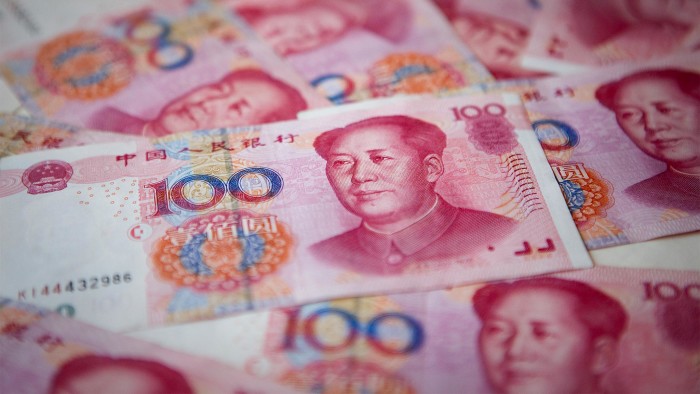China devaluation raises spectre of currency wars

Roula Khalaf, Editor of the FT, selects her favourite stories in this weekly newsletter.
All currency wars are self-defeating for their combatants. When a country slashes the value of its currency to boost exports, it inevitably triggers competitive devaluations by its trading partners, thereby robbing the first mover of its initial advantage. Thus it is unlikely that China, which in effect devalued the renminbi by 2 per cent on Tuesday, was intending to whip up currency skirmishes among its trade partners into a full-scale war.
But intentions are one thing, consequences another. China’s position as the world’s largest trading power ensures that its action will distribute deflationary pressures throughout its global supply chain, while intensifying pressure on competitors to seek their own currency depreciations. Such pressures will only grow if Tuesday’s action signals a sustained trend of weakening, as many analysts expect.
In its most crucial sense, the impetus for China’s devaluation, which represented the renminbi’s biggest drop since 1993, was self-defence. It is not just that exports have been dismal so far this year and tumbled again in July by 8.3 per cent.
It is also that China is suffering from a chain reaction of structural economic ills that threatens to run out of control. As ever, China’s true predicament is obscured by official statistics. The official gross domestic product growth rate was 7 per cent in the second quarter, but several independent analysts estimate that in reality it may be closer to 4 per cent.
A similar situation exists with investment, an important growth driver. Official numbers put fixed asset investment growth in the first half at 11.4 per cent, but a cleaner measure of how much companies are investing to boost their productive capacities — gross fixed capital formation — is running at an estimated 4 to 5 per cent, from 6.6 per cent in 2014, according to Gavekal Dragonomics, a research firm. Allowing for the depreciation of existing plant and machinery, it is possible that China’s growth in net capital formation is at or below zero, Gavekal Dragonomics estimates.
Against this background, the renminbi’s devaluation stands as an expression of distress. Certainly, Beijing did not wish it. Li Keqiang, premier, told the Financial Times in March: “We don’t want to see a further devaluation of the Chinese currency because we can’t rely on devaluing our own currency to boost exports.”
He added that a scenario in which major economies “trip over themselves to devalue their currencies” would lead to a currency war.
Special Report

China’s currency has become an increasingly important player on the world economic stage. But obstacles remain in the path of Beijing’s global ambitions for the renminbi
The timing of the U-turn may derive from three main influences. The US Federal Reserve’s signal that it may raise interest rates as early as this autumn could have added to the appeal of pre-emptive action.
The renminbi’s 10.3 per cent appreciation against all currencies since the start of 2014 (on a trade weighted and inflation-adjusted basis) may have reinforced perceptions that the redback was overvalued.
Lastly, China’s campaign to win acceptance for the renminbi into the International Monetary Fund’s special drawing rights (SDR) basket of currencies in December may have persuaded Beijing to show that it is embracing a more flexible currency regime, one of the conditions for SDR entry.
But the devaluation could yet have unwelcome effects. It looks likely to amplify China’s export of deflation by making Chinese goods cheaper.
This is of concern because the producer price index, which measures aggregate prices at the factory gate, fell in July for the 40th straight month to minus 5.4 per cent. This, coupled with the impact of potential competitive devaluations, looks likely to lead the world into another phase of slower growth.
This article has been amended since it was originally published to reflect China’s growth in net capital formation.
Comments